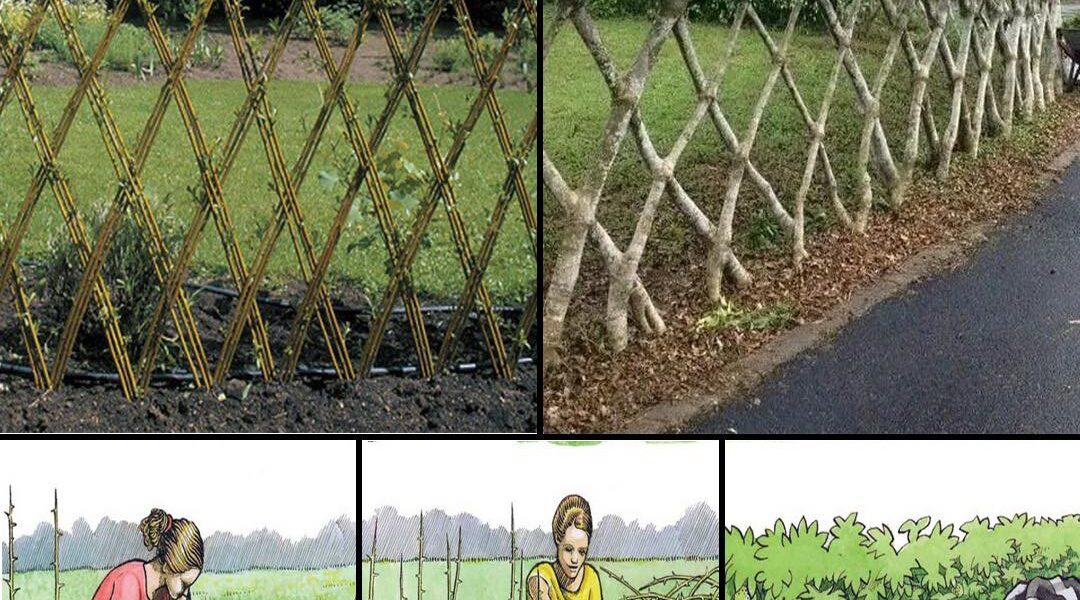The Green Solution: Create a Living Fence for Your Property
When it comes to fencing your farm or property, the options can seem endless, from traditional manufactured fences to electrical wire installations. However, in a world increasingly focused on sustainability and self-sufficiency, green fences are gaining popularity as a multifunctional alternative. These living fences not only define the boundaries of your property, but also provide a range of benefits that manufactured fences simply cannot match.
- The many advantages of living fences
A plant fence is essentially a dense hedge that can perform the functions of a traditional manufactured fence while providing many additional benefits:
Ecological diversity: Plant fences create “edge habitats” that support a wide variety of species, from insects and spiders to birds and mammals. This ecological diversity helps to maintain natural balances, by reducing the population of rodents and insects harmful to crops.
Food and Medicine: Depending on the species of plant or tree chosen, live hedges can provide food and medicinal resources to your property. Some species, such as elderberry and Chinese chestnut, offer foliage richer in protein than traditional forage crops.
Soil health: Certain species of legumes present in hedges, such as black locust and peas, fix nitrogen in the soil. This nitrogen can be harvested for garden mulches and compost, improving soil health and fertility.
Windbreaks: Plant fences act as natural windbreaks, reducing soil drying, wind erosion and stress on livestock and crop plants, thereby increasing yields.
Longevity: Live hedges can last for centuries, with many species capable of producing new shoots after pruning or grazing. This capacity for renewal ensures their sustainability.
Aesthetic Beauty: Unlike static manufactured fences, plant fences offer ever-changing beauty throughout the seasons, with colorful flowers in spring, vibrant fruits in summer and a striking geometric structure in winter.
- Living Fences in America
Living agricultural fencing has a rich history, although it has been underutilized in the United States compared to other countries. George Washington, for example, recognized the benefits of hedgerows and attempted to grow them at Mount Vernon to protect his property from marauding animals. He concluded that growing hedgerows was not only a good idea but also a necessity, highlighting the role of the honey locust in creating formidable barriers. - Osage Orange: a top choice
In the United States, Osage orange trees, also known as hedge apple trees or horse apple trees, are a favored choice for living fences. These trees were widely planted in the 1800s to fence off rapidly settled prairies and served as windbreaks during the Dust Bowl era. The Osage orange offers various benefits, including durability, drought resistance, and the ability to resist pests and diseases.
Additionally, Osage orange coppices are vigorously cut, allowing farmers to selectively cut sections of the fence for firewood and other uses. The resulting posts are exceptionally durable and an ideal choice for a long-lasting fence.
- Establish living fences
Creating a green fence involves planting suitable shrub or tree species in the immediate vicinity and pruning them closely to encourage thick, bushy growth. Inosculated fences, where crossing branches are linked to grow together into natural grafts, are another fascinating option for creating a tightly knit fence that becomes stronger over time. - Multifunctional options
The choice of species for your plant fence depends on your climate and the intended uses. Some multifunctional options include hawthorns, pyracanthas, jujube, black locust, honey locust, prickly ash and rugosa rose. These species provide deterrent power, edible fruits, medicinal uses, and wood for fuel and tools.
You can also mix different species within your living fence to create a diverse, multifunctional barrier that produces harvestable food and provides protection.
- Challenges and future prospects
Establishing plant fences
